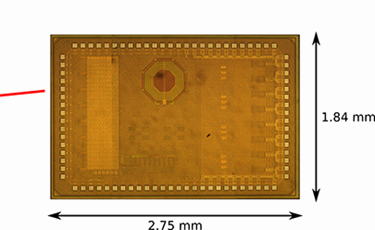New 5G Transmitter Expands Bandwidth Capacity By 20 Times
By Jof Enriquez,
Follow me on Twitter @jofenriq

A new type of 5G radio transmitter developed by Finnish researchers allows flexible specification of carrier waves in bandwidths of up to 400 MHz, which is about 20 times faster than the most efficient 4G transmitters today can transmit.
Researchers at Aalto University, Tampere University of Technology, and Nokia Bell Labs developed the transmitter to be almost completely digital, with the signal converted to the analog form only at the final amplification stage at the antenna, where it is converted to electromagnetic radiation.
"A completely new integrated electronic circuit has been developed for the transmitter to enable a notable increase in the frequency bandwidth. This makes the data transmission capacity of the base stations up to 20 times larger," said Aalto University Department of Electronics and Nanoengineering Professor Jussi Ryynänen in a news release. "The data transfer bandwidth of 4G transmitters is approximately 20 MHz, whereas our digital 5G transmitter can achieve bandwidths of up to 400 MHz."
In order to be flexible enough to handle increasing bandwidth demand, current single base stations use parallel transmitters that can be turned on or off, based on the location of the base station and the required data transfer bandwidth. However, the increasing number of interconnected devices could require a greater number of more affordable, much smaller, yet robust base stations to avoid network congestion.
To make this possible, the researchers designed an integrated base station transmitter prototype that lets operators specify which devices they share the signal to, and how, by adjusting parameters. In contrast, most existing base stations rely on targeting using a fixed frequency band.
"The 5G base station transmitter we developed enables new possibilities for modifying and programming the transmitted signal. The quality of the transmitted signal can be enhanced and we can freely choose the frequencies the transmitter uses without parallel radio transmitters," said Tampere University of Technology Communications Engineering Professor Mikko Valkama.
The project received financial support from Nokia and Tekes, the Finnish Funding Agency for Innovation. Results of the research were presented at the International IEEE Solid-State Circuits Conference, held in San Francisco in February. Also presented at the conference was a terahertz transmitter developed by Japanese researchers, who demonstrated the technology’s ability to transfer data at speeds of up to 100 Gigabits per second At 300 GHz.
